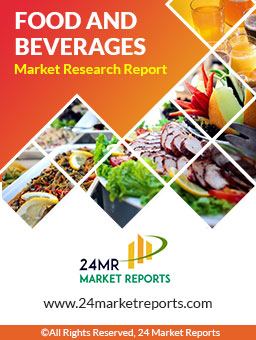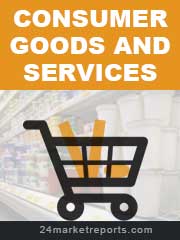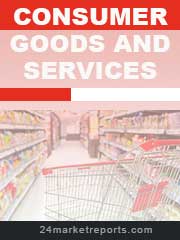
Download FREE Report Sample
Download Free sample
MARKET INSIGHTS
Global Food Absorbent Pads market size was valued at USD 416 million in 2024. The market is projected to grow from USD 453 million in 2025 to USD 727 million by 2032, exhibiting a CAGR of 8.5% during the forecast period.
Food absorbent pads are specialized packaging components designed to manage excess fluids from perishable food products. These innovative pads utilize advanced absorbent materials to extract moisture, thereby enhancing food safety, appearance, and shelf life while minimizing handling risks. Their dual functionality works both during storage and cooking processes.
The market growth is primarily driven by increasing demand for fresh food packaging solutions, particularly in the meat and seafood sectors which account for over 42% of application share. While North America dominates with 36% market share due to stringent food safety regulations, Asia-Pacific is emerging as a high-growth region because of expanding cold chain infrastructure. Hard pads currently lead the product segment with 58% market penetration, though soft pads are gaining traction in premium food packaging applications. Leading manufacturers like Novipax and Cellcomb are investing in sustainable material innovations to address environmental concerns while meeting evolving industry requirements.
Rising Demand for Food Safety and Extended Shelf Life Accelerating Market Growth
The global food absorbent pads market is experiencing robust growth driven by increasing consumer demand for food safety and quality preservation solutions. Food absorbent pads play a critical role in maintaining product freshness by absorbing excess fluids from meat, poultry, and seafood, which helps prevent bacterial growth and extends shelf life by up to 30%. The global packaged food market, valued at over $3 trillion, continues to expand, directly influencing the demand for advanced food packaging solutions like absorbent pads. With the food retail sector increasingly prioritizing food waste reduction, these pads have become essential components in modern food packaging systems.
Growth in Meat Consumption and Processed Food Industry Fueling Market Expansion
To know more about market statistics, Download a FREE Sample copy
The meat industry, which accounts for approximately 42% of food absorbent pad applications, is a primary growth driver as global meat consumption continues its upward trajectory. Developing nations are experiencing particularly strong growth in meat demand, with Asia Pacific's meat consumption projected to increase by nearly 15% over the next five years. Furthermore, the processed food sector's expansion is contributing significantly to market growth. Food absorbent pads not only maintain product quality but also enhance visual appeal - a critical factor influencing consumer purchasing decisions in retail environments. The global processed meat market's steady 4-5% annual growth directly correlates with increasing absorbent pad adoption in food packaging solutions.
Additionally, technological advancements in absorbent pad materials such as superabsorbent polymers (SAP) and cellulose-based solutions are improving performance characteristics. These innovations enable pads to absorb up to 200% of their weight in liquid while remaining odor-neutral, addressing key consumer concerns about food quality and safety in packaged products.
Environmental Concerns and Plastic Regulations Challenging Traditional Pad Materials
While the food absorbent pad market shows strong growth potential, it faces significant restraints from increasing environmental regulations and shifting consumer preferences toward sustainability. Many conventional absorbent pads utilize plastic-based components that are facing scrutiny under global plastic reduction initiatives. Over 60 countries have implemented some form of plastic packaging regulations, creating compliance challenges for manufacturers. Furthermore, the current recycling infrastructure struggles to effectively process composite pad materials, leading to disposal challenges in the circular economy.
The industry is also grappling with rising raw material costs, particularly for petrochemical-based superabsorbent polymers. Supply chain volatility and geopolitical factors have caused significant fluctuations in polymer prices, impacting production costs and profit margins for manufacturers. This cost pressure is particularly challenging for small and medium-sized enterprises in price-sensitive markets, potentially limiting market expansion in developing regions.
Balancing Performance with Sustainability Poses Technical Challenges
The industry faces significant technical challenges in developing sustainable absorbent solutions that meet performance requirements. While biodegradable alternatives are available, many currently exhibit 15-20% lower absorption capacity compared to conventional SAP-based pads. Manufacturers must invest heavily in R&D to improve natural fiber performance without compromising food safety standards or significantly increasing production costs. Current testing shows plant-based alternatives require approximately 30% more material to achieve comparable absorption, potentially increasing packaging volume and transportation costs.
Another major challenge lies in maintaining food contact safety standards while transitioning to novel materials. Regulatory approvals for new absorbent materials can take 12-18 months, delaying market introduction of innovative solutions. The industry must also address consumer perceptions about food safety with alternative materials, as traditional plastic-based pads are often perceived as more "hygienic" despite environmental trade-offs.
Emerging Sustainable Solutions Creating New Growth Frontiers
The sustainability megatrend presents significant opportunities for innovative food absorbent pad solutions. Recent developments in plant-based superabsorbents from agricultural byproducts show promising absorption capabilities while reducing environmental impact. The global market for sustainable packaging solutions is projected to grow at nearly 7% annually, creating substantial demand for eco-friendly absorbent pad alternatives. Manufacturers investing in circular economy models, including compostable or recyclable pad solutions, are well-positioned to capture this emerging market segment.
Advanced manufacturing techniques such as 3D printing are enabling customized pad designs for specific food applications. These solutions can optimize absorption patterns and material usage, reducing waste while improving performance. Customized solutions for premium food products present an attractive high-margin segment, with certain specialized applications commanding prices 40-50% higher than standard pads.
The expanding online grocery sector, projected to exceed $600 billion globally by 2025, requires robust packaging solutions to ensure food quality during transportation. This represents a significant growth opportunity for advanced absorbent pad solutions designed specifically for e-commerce applications, combining superior absorption with enhanced protective properties for shipping conditions.
Hard Pad Segment Dominates the Market Due to High Durability and Absorption Efficiency
The market is segmented based on type into:
Hard Pad
Subtypes: Standard thickness, reinforced, and others
Soft Pad
Subtypes: Thin-film, multi-layered, and others
Biodegradable Pads
Specialty Pads
Subtypes: Antimicrobial, high-absorbency, and others
Red Meat Segment Leads Due to High Fluid Retention Requirements in Packaging
The market is segmented based on application into:
Red Meat
Poultry
Fish & Seafood
Fruits & Vegetables
Processed Foods
Retail Packaging Sector Accounts for Largest Share Due to Consumer Demand for Freshness
The market is segmented based on end-user into:
Retail Packaging
Food Processing Industry
Food Service Providers
E-commerce Food Delivery
Innovation and Regional Expansion Drive Competition in Food Absorbent Pads Market
The global food absorbent pads market features a fragmented competitive landscape with dominant players, regional specialists, and emerging innovators vying for market share. Novipax, Cellcomb, and Sirane collectively command approximately 16% of the market, reflecting their technological leadership in fluid management solutions for food packaging. These industry leaders continue to invest in advanced absorption technologies that extend shelf-life while meeting stringent food safety regulations.
North American producers maintain competitive advantage through vertical integration with meat processors and retailers, capitalizing on the region's 36% global market share. European manufacturers like McAirlaid's and Rottaprint are gaining traction with eco-friendly pad solutions, responding to the EU's strict sustainability mandates for food contact materials.
The market sees increasing competition from Asia-Pacific manufacturers such as Fibril Tex Pvt Ltd, who combine cost efficiency with improving technological capabilities. Their growth is reshaping global supply chains, particularly in poultry and seafood applications where price sensitivity is high.
Strategic acquisitions have become commonplace, with packaging conglomerates like Aptar and Demi Company expanding into food absorbent solutions to complement their existing product portfolios. Meanwhile, specialist firms such as Thermasorb and Tite-Dri Industries compete through proprietary absorption technologies tailored for specific meat and produce segments.
Novipax (U.S.)
Cellcomb AB (Sweden)
Sirane Group (UK)
Rottaprint (Germany)
AptarGroup, Inc. (U.S.)
Elliott Absorbent Products (U.S.)
MAGIC (Italy)
Thermasorb (U.S.)
Fibril Tex Pvt Ltd (India)
Tite-Dri Industries (U.S.)
Demi Company (U.S.)
McAirlaid's Vliesstoffe GmbH (Germany)
The global food absorbent pads market is experiencing a significant shift toward sustainable packaging solutions, driven by increasing environmental regulations and consumer demand for eco-friendly products. Manufacturers are investing heavily in biodegradable and compostable absorbent pads, with cellulose-based and recycled fiber materials gaining traction. Recent data indicates that over 65% of food packaging companies now prioritize sustainability in material selection, a trend that directly impacts the absorbent pads segment. Advances in material science allow for improved fluid retention while reducing environmental impact – a balance that is critical for market competitiveness. While traditional plastic-backed pads still dominate, their market share is projected to decline by 15-20% by 2030 as bio-based alternatives become more cost-effective.
Smart Packaging Integration
The integration of smart packaging technologies with absorbent pads is emerging as a noteworthy trend. Combined solutions that incorporate freshness indicators or time-temperature sensors are gaining adoption, particularly in premium meat and seafood packaging. These smart pads not only absorb excess fluid but also provide real-time quality monitoring, reducing food waste by up to 30% according to industry estimates. This convergence of absorbency and intelligent functionality creates new value propositions for brands seeking to differentiate their products in crowded retail environments.
Region-specific trends are reshaping the industry landscape, with North America leading in technological adoption while Asia-Pacific shows the highest growth potential at 11.2% CAGR. Meanwhile, application-specific innovations are driving product segmentation - the poultry sector now demands thinner pads with higher absorption rates, while the red meat industry prioritizes heavy-duty solutions. Recent developments include antimicrobial-treated pads for tropical fruit export markets and specialized low-profile designs for modified atmosphere packaging. These tailored solutions account for approximately 40% of recent product launches as manufacturers seek to address niche requirements across different food segments and distribution channels.
North America
North America dominates the global food absorbent pads market with a 36% share, driven by stringent food safety regulations and high consumer demand for packaged meat products. The U.S. accounts for the majority of regional demand, supported by advanced retail packaging practices and a $1.2 trillion processed food industry. Regulatory bodies like the FDA mandate hygienic food packaging solutions, accelerating adoption. Meanwhile, hard pads remain preferred (58% market share) due to their durability in meat packaging. However, environmental concerns are pushing manufacturers toward biodegradable alternatives, with major players like Novipax investing in sustainable materials.
Europe
Europe holds a 32% market share, led by Germany, France, and the UK, where EU food safety standards (e.g., Regulation (EC) No 1935/2004) necessitate high-performance absorbent solutions. The region’s strong meat-processing sector—particularly pork and poultry—fuels demand, accounting for 42% of total pad usage. Sustainability initiatives like the Circular Economy Action Plan are prompting shifts toward compostable pads, though cost premiums remain a barrier. Scandinavian countries lead in eco-innovation, with startups developing plant-based absorbent materials. Retailers like Tesco and Carrefour increasingly mandate sustainable packaging, influencing supplier choices.
Asia-Pacific
The Asia-Pacific region is the fastest-growing market (CAGR 9.1%), propelled by China’s booming meat consumption and India’s expanding cold chain infrastructure. Despite holding 27% of global market share, per-capita pad usage remains low due to cost sensitivity and fragmented retail sectors. Japan and South Korea prioritize high-quality pads for seafood exports, while Southeast Asia focuses on poultry applications. Urbanization and rising disposable incomes are key drivers, though price competition from local manufacturers limits premium product penetration. Governments are gradually tightening food waste regulations, creating long-term opportunities.
South America
Brazil and Argentina drive demand in this nascent market, where meat exports (especially beef) necessitate reliable absorbent solutions. Economic instability and reliance on imports constrain growth, but regional players are emerging. The lack of standardized food safety laws results in uneven quality adoption, with larger processors leading the shift toward advanced pads. Brazil’s beef industry—the world’s second-largest—offers untapped potential, though currency fluctuations deter foreign investment. Local manufacturers focus on cost-effective soft pads for domestic use, while export-focused firms align with EU/U.S. standards.
Middle East & Africa
This region shows fragmented but promising growth, with the UAE and Saudi Arabia leading via modern retail expansion. Import-dependent food sectors prioritize extended shelf life, but low local production keeps pad adoption sporadic. Halal meat certifications are indirectly boosting demand, as exporters comply with international packaging norms. Challenges include limited cold chain infrastructure in Africa and reliance on price-competitive imports. However, urbanization and tourism-driven foodservice growth are expected to gradually increase demand, particularly for poultry and seafood applications.
This market research report offers a holistic overview of global and regional markets for the forecast period 2025–2032. It presents accurate and actionable insights based on a blend of primary and secondary research.
✅ Market Overview
Global and regional market size (historical & forecast)
Growth trends and value/volume projections
✅ Segmentation Analysis
By product type or category
By application or usage area
By end-user industry
By distribution channel (if applicable)
✅ Regional Insights
North America, Europe, Asia-Pacific, Latin America, Middle East & Africa
Country-level data for key markets
✅ Competitive Landscape
Company profiles and market share analysis
Key strategies: M&A, partnerships, expansions
Product portfolio and pricing strategies
✅ Technology & Innovation
Emerging technologies and R&D trends
Automation, digitalization, sustainability initiatives
Impact of AI, IoT, or other disruptors (where applicable)
✅ Market Dynamics
Key drivers supporting market growth
Restraints and potential risk factors
Supply chain trends and challenges
✅ Opportunities & Recommendations
High-growth segments
Investment hotspots
Strategic suggestions for stakeholders
✅ Stakeholder Insights
Target audience includes manufacturers, suppliers, distributors, investors, regulators, and policymakers
-> Key players include Novipax, Cellcomb, Sirane, Rottaprint, Aptar, Elliott Absorbent Products, MAGIC, Thermasorb, and McAirlaid's, among others.
-> Key growth drivers include rising demand for food safety solutions, increasing meat consumption, and growth in packaged food industry.
-> North America is the largest market with 36% share, followed by Europe (32%) and Asia-Pacific (27%).
-> Emerging trends include biodegradable absorbent pads, antimicrobial technology integration, and smart packaging solutions.

Speak to our Custom Research Team and get the Custom Research in a budget
Custom ResearchFrequently Asked Questions ?
A license granted to one user. Rules or conditions might be applied for e.g. the use of electric files (PDFs) or printings, depending on product.
A license granted to multiple users.
A license granted to a single business site/establishment.
A license granted to all employees within organisation access to the product.
Upto Working 24 to 48 hrs
Upto 72 hrs max - Weekends and Public Holidays
Online Payments with PayPal and CCavenue
Wire Transfer/Bank Transfer
Hard Copy




 Industry Market Size
Industry Market Size SWOT Analysis
SWOT Analysis Industry Major Players
Industry Major Players Revenue Forecasts
Revenue Forecasts Historical and Forecast Growth
Historical and Forecast Growth Profitability Analysis
Profitability Analysis
























